Galician Food Dishes: Basic Overview
Common Ingredients
Common Cooking Methods
Courses
Meals
Key Taste
Eating Etiquette
Meal Presentation
Culinary Festivals
Influence and Fusion
Galician Food Dishes: Origin and Region
Cuisine
Cuisine’s Geographical Territory
Popular Types of Galician Dishes
-
Cakes and Pastries
Tarta de Santiago is among the most iconic, celebrated for its rich almond flavor.
These cakes are often served as desserts and pair well with coffee.
They use simple, high-quality ingredients sourced in the region.
-
Stews and Soups
These meals are typically prepared with seasonal and local ingredients.
Potatoes, greens, legumes, meats, and seafood are common ingredients in these stews and soups.
-
Charcuterie and Cheese Boards
Charcuterie and cheese boards highlight artisanal craftsmanship in meat curing and cheese making.
Locals use age-old techniques passed down through generations to prepare these foods.
They can be enjoyed as appetizers, snacks, or even as a meal.
Don’t miss out on any Galician dishes from the community of Galicia in Spain! To the northwest of the country, you’ll find endless delicious sauces and seafood in Galicia.
There are six culinary regions in Spain with separate cultures and tastes. Galicia is known for its seafood, empanadas, octopus (polbo á feira), and Tetilla cheese.
The cuisine emphasizes simple, quality ingredients, including potatoes which are a key staple. It also includes meats and dairy from local farms.
Plus, the Galician bread, made from a mix of local and imported wheat, has earned a special EU protection status.
Overall, Galician dishes are not only wonderful Spain specialties but also the world in general.
In the reading, I provide you with some insights about traditional food here, what makes them popular, and how healthy they are before digging into famous Galician delights.
Next, you’ll learn more about the influences on this cuisine, especially about the region’s history, geography, and traditions. Keep reading to learn the unexpected!
18 Popular Galician Dishes with Filters
Dishes in Galicia are worth trying! If you are interested in them, below are 18 options for you. Plus, you can use the comprehensive filtering system to explore these Galician dishes based on ingredients, flavors, types of dishes, cooking techniques, etc.
But first, let’s dive into the categories of Galician cuisine that cover the most popular, traditional, national, and street delights.
Polbo á feira is a national dish of Galicia, acting as a culinary pride in this region.
Galician street food is a quick, flavorful delicacy, providing a window into the everyday lives of the region.
Empanada
- Street Food
- Traditional
Empanada is a famous patty in Galicia and South America in general after the Spanish colonization.
The origin of this delicious treat remains unknown, but most people believe that it first appeared in Galicia. Its name derives from “empanar” in Spanish, which means breaded or covered in bread.
Basically, empanadas consist of chopped or minced meat, regional spices, and perhaps boiled eggs. The locals will cover that combination in a flat dough, shape it into a crescent, and then bake or fry it until perfectly golden brown.
In the old days, empanadas used to be a favorite Galician breakfast dish for the working class due to their convenience and nutrition. You can find many variations of empanada from region to region, but the most famous version in Spain is Empanada Gallega.
Empanada Gallega
- Traditional
Empanada Gallega is normally in large rounds or squares, unlike most empanadas with portable sizes and crescent shapes. It’s a staple for special occasions or celebrations of the locals, and they enjoy it either chilled or freshly baked.
The Galicians make it with leavened dough and multiple stuffings before baking it until golden brown. Though paprika and onions are always included, the stuffing variations are endless, from meat bases to vegan. Still, the most popular ones in Galicia are tuna fillings.
Lacón Con Grelos
- Traditional
Lacon con Grelos is among the most popular meat dishes in Galicia. It’s highly associated with both the cold months and the Carnival festival – when the turnips are at the best stage to crop.
The locals make this traditional dish with slices of pork shoulder or ham hock and turnip buds or greens, not the root parts.
Lacón con Grelos is typically served as a warm stew. When serving, you can expect to enjoy this dish alongside some boiled potatoes, chorizo sausage, and other optional vegetables.
Polbo á Feira
- National
- Street Food
- Traditional
Polbo á Feira, also known as “fair-style octopus,” is a quintessential dish of Galician cuisine. The star of the dish is octopus, which is tenderized, traditionally by beating and then boiling until it reaches the perfect texture.
After boiling, the octopus is cut into bite-sized pieces with scissors. The sliced octopus is sprinkled with coarse sea salt and smoky paprika (pimentón), and drizzled with extra-virgin olive oil.
Polbo á Feira is normally served on wooden plates, which is a nod to the dish’s origins in outdoor markets and fairs (feiras). Locals often pair it with boiled potatoes and Galician bread.
Chuletón De Ternera
- Traditional
Chuletón de Ternera features a large, bone-in rib steak, distinguished by its rich marbling and profound flavors in Galicia.
This region owns the best breed of cow in Spain, and they call it Rubia Gallega or Galician blond. Order an “A la plancha” or grilled in Galician for the best experience.
The steak, often aged to perfection, is seasoned with nothing more than coarse salt, and occasionally pepper, to highlight the meat’s natural flavors.
They usually serve this dish with roasted potatoes, green salads, or grilled vegetables. You can easily address steak restaurants while traveling in Galicia.
Churrasco
- Traditional
Churrasco primarily revolves around various types of meats, predominantly pork ribs and beef in Galicia. They are marinated and then grilled over an open flame to achieve a perfect char and smokiness.
The marinade, a blend of garlic, paprika, olive oil, and sometimes white wine, infuses the meat with a robust flavor that is both spicy and aromatic.
Though Churrasco only refers to grilled beef in many nations, the Galicians use this term for grilled meat in general, specifically the spare rib. They also use the term “churrascada” to indicate the family event that basically is the BBQ party in America.
Cocido Gallego
- Street Food
- Traditional
Cocido is a term for stewed delicacies in various Spanish recipes, particularly in Galicia. The term derives from the word “Cocer”, which means to boil. You can also find this name in Portugal and Brazil.
In Spain, there are many variations of this dish that are named after their origin, and Cocido Gallego is among the most famous ones. The Galicians also prepare their stew with turnip greens, pork shoulder meat, chorizo sausage, and potatoes.
This stew is also among the cultural Galician dinner dishes for the cold months. Beans, mostly chickpeas, are another irreplaceable ingredient for Cocido Gallego. Poultry sometimes also takes part, and the locals will slowly cook the whole combination on low heat.
Botelo
- Traditional
Botelo is a traditional dish consisting of chopped pork meat stuffed in a pig’s cecum. It is a delight from El Bierzo, a county in Galicia. Some other regions may call it Botillo El Bierzo.
The locals usually use pork tail, ribs, and head meat, such as ears, snouts, or jaws, for Botelo. It’s crucial to season the chopped meat with garlic and paprika before stuffing them.
The process of making this culinary specialty takes at least 4 days from the butchering until done. After mixing the meat with spices, the Galicians will smoke it with oak wood. Then they’ll allow it to sit in the drying room for at least 2 more days to ensure its consistency.
When serving, the locals will re-cook Botelo after covering it in a sheet. This dish has a distinct flavor from pig along with an interesting smoky, peppery aroma.
Androlla
- Traditional
The Galicians have created their own kind of sausage – the Androlla. They make it with pork spare ribs or “cueras” – bacon end slabs, and stuff it in natural casings.
The traditional paprika also takes part, as well as garlic, oregano, and white wine, in order to season the meat. Hence, the deliciousness of this sausage doesn’t only come from the spice, but also from the qualified meat itself, the local Celta pigs.
Androlla is usually smoked and cured in a 2-month process before you can re-cook it and consume it. The Galicians also use Androlla with Lacon con Grelos in place of Chorizo.
However, you might want to make sure you’re enjoying the right Androlla since some Galician regions use this term to indicate any pork sausage.
Mejillones Al Vapor
- Traditional
Mejillones al Vapor, or steamed mussels, is highly abundant in Galicia, mainly in the regions of A Coruña and Pontevedra. The locals prepare this dish by steaming mussels with lemon, white wine, spring onions, and a few bay leaves.
Here, they use the typical Fresh mussels from local coasts. These mussels are so-called Mytilus Galloprovincialis, and the locals are proud of this nourish and flavorful kind of seafood. Hence, they store it in the most dedicated method to maintain freshness and deliciousness.
The Galicians even register for these mussels a prestigious quality seal to protect their designation of origin (or PDO). If you want to sample this type of mussels, you can identify them by the red and yellow PDO seal with the label “Mejillon de Galicia” on their shells.
Mejillones Rellenos
- Street Food
- Traditional
In Galicia and Spain in general, Mejillones Rellenos is one of the most famous tapas, which means appetizer. This mussel-based dish sprouts from the Bilbao city of Basque, and other regions of Spain also call it Tigres or tigers in English, which derives from its fiery flavor.
The Galicians prepare this seafood by covering it in a mixture of wine, onion, and flour. Then, they once again coat it in breadcrumbs before frying. When serving, the cooks usually place the mussels back into their shells, which the customers are free to discard on the floor.
The locals consider that’s the best way to enjoy Mejillones Rellenos, and you can often see empty mussel shells laying on the floor, even in the bars. In addition, this dish is also famous for its accompanying spicy sauce that comes from tomatoes, anchovies, and peppers.
Merluza A La Gallega
- Street Food
- Traditional
Merluza a La Gallega, or Galician-style Hake, is very common in Galicia. The centerpiece of this dish is merluza, or hake, a white fish beloved for its delicate, flaky texture and mild flavor. The locals will slowly cook the fish with bay leaves, onions, and potatoes in salted water.
In another pan, they prepare the signature sauce for this dish that combines sauteed garlic, olive oil, and paprika. Some modern methods may only use one-pan recipes. Still, the traditional way is to pour the sauce onto the fish and reheat it when serving.
In Galicia, the hake is often sourced from the cold Atlantic waters, ensuring freshness and quality.
Caldo Gallego
- Traditional
Caldo Gallego is a hearty and comforting soup that is a staple of Galician cuisine. Like Cocido, the Spanish names for the Caldo or broth after its origin, and Caldo Gallego is one of the most outstanding.
It consists of chickpeas or white beans, turnip greens, broccoli, and potatoes. Hence, you can tell that the broth base itself is vegan. However, the local cooks may sometimes add meat ingredients such as sausage, lard, ham, or bacon.
The traditional way to serve this delicious, nourishing soup is in an earthen bowl called Cuncas. It’s also known as a standard course starter for lunch dishes in this area.
Pimientos De Padron
- Street Food
- Traditional
Originating from the town of Padrón in Galicia, Pimientos de Padron or Padron peppers are often served as a popular tapas dish.
These small green peppers have a mild flavor, and the locals mostly pan-fry them with olive oil with some coarse salt for garnishing.
You can find these peppers in almost any tapa bar or restaurant, and they usually serve them with wine, cider, or a glass of beer. The exciting part is one or two out of ten Padron peppers are incredibly spicy, and you won’t be able to identify those until you eat them.
In Galicia, they got a saying, “Os pimientos de Padrón, uns pican e outros non”, which means “Padron peppers, some are hot, some are not”. They are so proud of this extraordinary pepper that they hold an annual festival to honor it in August.
Pan Gallego
- Traditional
Pan Gallego is a traditional bread that is available in artisan bakeries across the Galician regions. The bakers make this iconic bread type with Galician wheat flour, a sourdough starter, a large amount of water, and a pinch of salt.
The leavening or resting process of this bread takes at least 3 hours. Hence, the outcomes are soft with springy crumbs and many air pockets. The locals prefer to form a hard crust for Pan Gallego, and they shape the bread into 4 different types.
The first is an uneven round with a knot on top called Hogaza. Barra is similar to a baguette. The remaining two are flatbread, the ring shapes are Rosca, and Torta is round. The best way to enjoy Pan Gallego is with slices of Queso Tetilla – keep reading to know about this cheese.
Queso Tetilla
- Traditional
Queso Tetilla is a staple cheese variant in Galician cuisine. The locals either enjoy it with Pan Gallego or as a dessert. The buttery and aromatic flavor of Queso Tetilla comes from the milk of three cow breeds: the Dutch Friesian, the Swiss Brown, and the local Rubia Gallega.
While Queso generally means cheese, Tetilla derives from the breast shape of the cheese block. The artisans usually make this cheese weigh 0.5 to 1.5 kilograms in a pear-like form with a point on top. Thus, the locals also call it “Perilla”, which means nipple.
Many would describe the taste of Queso Tetilla as relative to walnuts and vanilla. You can add it to your cheeseboard and enjoy it with optional wine or combine it with chorizo sausage, bread, and ham as the Galicians do.
Leche Frita
- Traditional
The origin of Leche Frita is quite fuzzy, though some may insist that it’s an invention of the nuns in Palencia in an effort to maintain their convents. Nowadays, it’s one of the most favorite Galician desserts that you can sample throughout Spain.
To prepare Leche Frita, the cooks will first combine cornstarch, flour, sugar, egg, and milk. After cooking the combination into a firm dough, they will cut it into bite-sized pieces and deep-fry them. They will add a coating of sugar glaze and cinnamon powder when serving.
You can either enjoy these sweets hot, chilled, or cold. But ideally, the Galicians will have it alongside a scoop of ice cream. Although it’s available primarily in pastry shops and restaurants, you can also find Leche Frita at street food stalls in Galicia.
Tarta De Santiago
- Traditional
While Tarta means torta or cake or pie in Spanish, Santiago literally means Saint James, which indicates the cross imprint on top of the cake. It’s also a historical dessert since its first traces were in the 16th century.
The first printed recipe for this signature Spanish dessert was around 1983, and the icing sugar with Cross of Saint James garnish appeared in 1924. Nowadays, many bakeries in Galicia still use those centuries-old recipes, comprising egg, ground almond, and sugar.
The standard quality ones contain at least one-third of almonds. The flavorings vary, from sweet white wine, brandy to lemon zest or grape marc. Tarta de Santiago can exclude the base, but the baker often will form it with puff pastry or shortcrust pastry.
What Are Influencers on Galician Cuisine?
Culinary practices in Galicia reflect the interplay between different elements, mainly history, geography, and culture.
Galicia’s ancient Celtic heritage influences its culinary traditions, particularly in the communal aspect of dining and the prevalence of hearty stews and broths. The Romans introduced techniques for preserving food, such as smoking and salting fish, which are still prevalent in this region.
Galicia’s coastal bounty has a profound impact on the area’s ingredients, with seafood playing a starring role. The region’s fertile lands also support a rich variety of crops, including the potatoes and greens found in many traditional recipes.
Galicia, being the final destination of the Camino de Santiago, has developed a culture of hospitality and sharing. Galician cuisine is also closely tied to the calendar, with specific dishes and ingredients associated with various religious and seasonal festivals.
What Are Ideal Beverages to Pair with Galician Dishes?
Finally, many know of Galicia for its beautiful scenery with a long coastline, many fountains, and wonderful forests. Thus, there’s nothing more satisfying than eating astonishing traditional dishes while watching the incredible landscape.
So feel free to let me know your thoughts in the comment sections! I’m extremely curious about what dish has caught your attention or your experiences of traveling in the Galicia region. Moreover, don’t forget to share this “delicious” information with your loved ones!





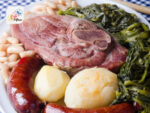
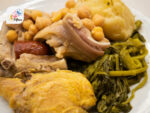
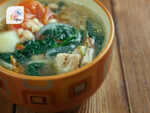
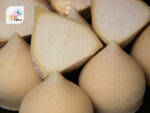

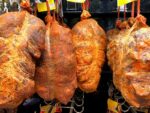
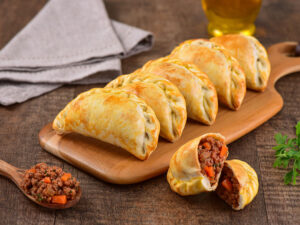
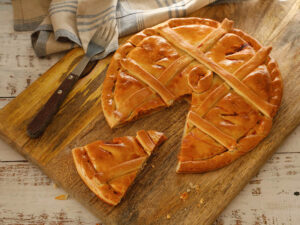
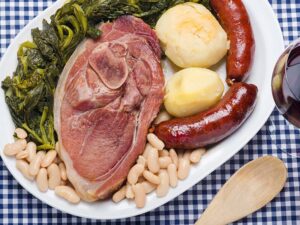
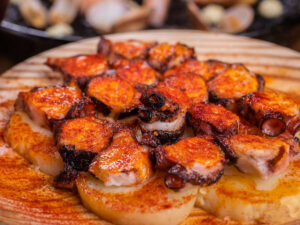
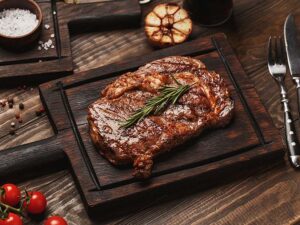
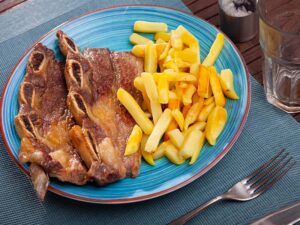
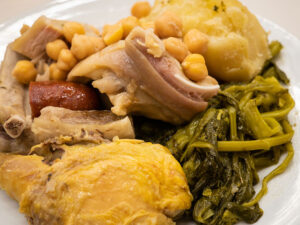
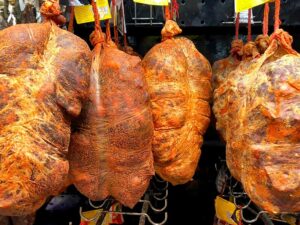

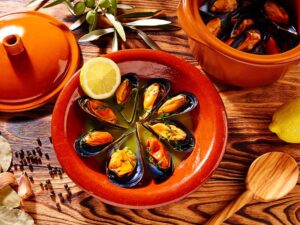
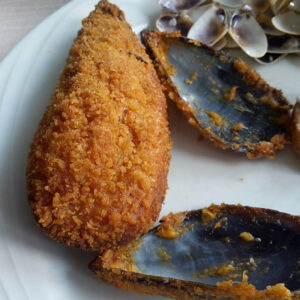

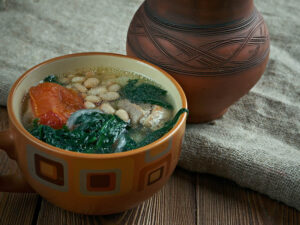
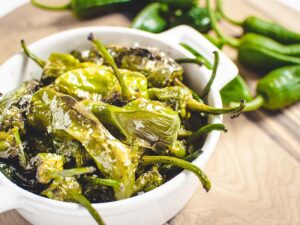
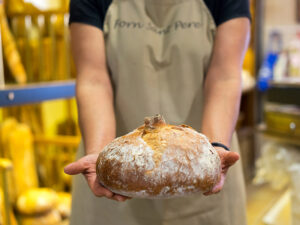
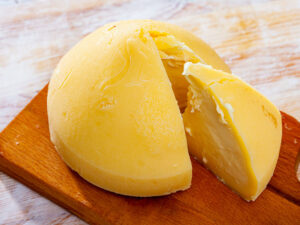
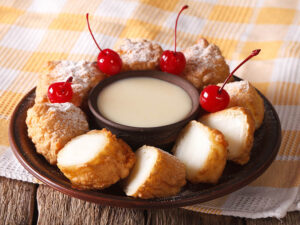
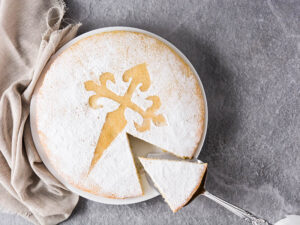

Jamie Scott
Editor in Chief, Senior Content Writer
Expertise
Home Cooking, Meal Planning, Recipe Development, Baking and Pastry, Food Editor, Cooking-video Maker, Western Food Evaluation Expert
Education
Le Cordon Bleu College of Culinary Arts
Local Community College, New York, NY
Jamie Scott is a skilled culinary expert and content creator specializing in Western cuisine. With over 15 years in the culinary field and formal training from Le Cordon Bleu, Paris, Jamie deeply understands how to blend nutrition with delicious flavors. His passion for cooking matches his commitment to making healthy eating accessible and enjoyable.
On Fifteen.net, Jamie brings a fresh perspective to classic dishes and beverages, offering readers insightful recipes, cooking tips, and a fresh view on meal planning that emphasizes taste, health, and simplicity.